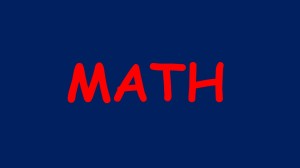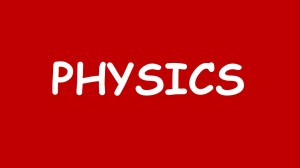H2 PHYSICS HANDS-ON PRACTICAL CRASH COURSE
H2 PHYSICS PRACTICAL
H2 CHEMISTRY PRACTICAL
H2 BIOLOGY PRACTICAL
HOW TO BOOK A LAB SESSION:
(1) Decide which Program or Lab sessions you need or most suitable for, by visiting the webpages of the practical subjects you are interested in (if you can’t find the labs you need, message us at 88765498).
(2) Whatsapp or Message our staff at 88765498 with your Name, Private or School Candidate, A or O level, Subject or Lab Name (e.g Lab PP2), Date and Time of Lab. (Our staff will then guide you on how to register and make payment. If you are not sure about the lab sessions, just state your Name and the Subjects and we will get back to you)
(3) Register Online by clicking below:
(4) Pay Registration fee of $30 via Paynow or funds transfer.
(5) Make the required payment for each lab session at least 5 days before the date of the lab session. (You may also pay for several sessions at one go to ensure that you will have a place in future slots)
Physics Paper 1 MCQ
1) A 2) D 3) C 4) A 5) C
6) A 7) D 8) C 9) A 10) C
11) B 12) A 13) D 14) A 15) A
16) A 17) C 18) A 19) C 20) B
21) C 22) D 23) B 24) B 25) A
26) B 27) B 28) B 29) D 30) B
31) B 32) D 33) B 34) C 35) C
36) C 37) C 38) A 39) D 40) B
Physics Paper 2
1. a) EPE = 0.662J
bi) The system has only GPE before the 300g mass is released. After releasing, part of the GPE is converted to KE and to EPE. At the lowest point, once the mass comes to a stop, all of the GPE will have been converted to EPE.
ii) v = 1.21 m/s
iii) 0.40m
2a) Select 2 points from the graph: (6.0, 1.25) and (12.0, 2.50)
(V – 12.0)/(I – 2.50) = (12.0 – 6.0) / (2.50 – 1.25)
V – 12.0 = (6.0/1.25) (I – 2.50)
V = 4.81I
V is proportional to I
bi) 4.8Ω
ii) 1.3 A , 1.6A
iii) 6.35 V
3a) Incident photons must have energy greater than or equal to the work function of M to emit one electron. Energy of photon is related to the frequency of the electromagnetic radiation by E = hf
bi) Free electrons at the surface are emitted with maximum KE but electrons of the outer shell require more energy to escape thus they will be emitted with less KE. A minimum potential difference is present to stop the photoelectrons with the maximum KE from reaching the collector in order to reduce the current to zero.
ii)It is limited by rate of emission of photoelectrons, which is dependent on the intensity.
c) 9.45 x 10^14 Hz
d) Starts from -2.2v and follows the same shape of the original. The value of y-intercept is doubled due to the doubled intensity.
4a) 0.712 m/s^2
bi) Since the 2 moons move in circular orbits around Jupiter’s center of mass, thus the centripetal force is also the gravitational force due to Jupiter, which acts towards Jupiter’s center of mass.
ii) 2.33
5ai) 4.80 x 10^-14 N
ii) -2.30 x 10^-16 N
b) Electrostatic force on A due to B and B due to A are internal forces. They have the same magnitude but different in direction. Thus the resultant force action on the molecule is zero.
c) 1.6628 x 10^-25 Nm
6a) 128, 54
b) 1510 s
7ai) s = -3.0
ii) -3.170 , -0.693
iii) Plot the point and draw the best fit line.
iv) 3.10
v) There is a linear relationship between ln(y1/m) and ln(l/m) with a gradient of 3.1 and with a y- intercept of -1.02.
vi) 3
b) k = 2.70 x 10^-10
ci) Acceleration is directly proportional to the displacement. The negative sign indicates that the acceleration is opposite to the displacement and is always directed to the position of zero displacement.
ii) 0.560
8.
Apparatus.
Filament lamp, power supply, beaker, thermometer, Stirrer, Stopwatch, Voltmeter, Ammeter, Rheostat, Switch, Weighing machine, Waterproof tape.
Draw a diagram with a filament lamp immersed in water, with the thermometer and stirrer inside the beaker. Draw the circuit of the lamp with connecting ammeter and voltmeter and the power source.
Procedure.
- Measure mass of water in beaker, m.
-
Insulate the beaker.
-
Connect filament lamp with circuit, wrap the metal cap with the waterproof tape.
-
Set up apparatus as shown.
-
Record initial temperature.
-
Close the circuit and start the stopwatch.
-
When the temperature hits 70ºC, stop the stopwatch and record the readings of the voltmeter and ammeter.
-
Repeat steps 5 to 7 after replacing the hot water in the beaker with the same amount of water at room temperature. Obtain different potential differences by changing the resistance of the rheostat.
Working
- 1 – (Thermal energy/electrical energy output)
-
Relationship between I and t is given by η = aV^b , where a and b are constants. The equation can be written as lg η = b lg V + lg a
-
Plot a graph of lg η against lg V and obtain a and b
Accuracy
- Minimise heat loss to surroundings by using the lid and lagging.
-
Conduct preliminary experiments to decide on the suitable values of resistance and voltage supply.
-
Ensure experiment is not conducted over long periods of time so that efficiency of the lamp is not affected by the thermal energy released.
Safety
- Handle with dry hands to prevent electrocution.
-
Ensure the circuit is not in contact with the water.
-
Handle the beaker with care when replacing the water.
A-LEVEL H2 MATH JUNE HOLIDAYS INTENSIVE REVISION
A-LEVEL H2 PHYSICS JUNE HOLIDAYS INTENSIVE REVISION
JUNIOR COLLEGE / A-LEVEL TUITION:
_______________________________________________________________________
______________________________________________________________









